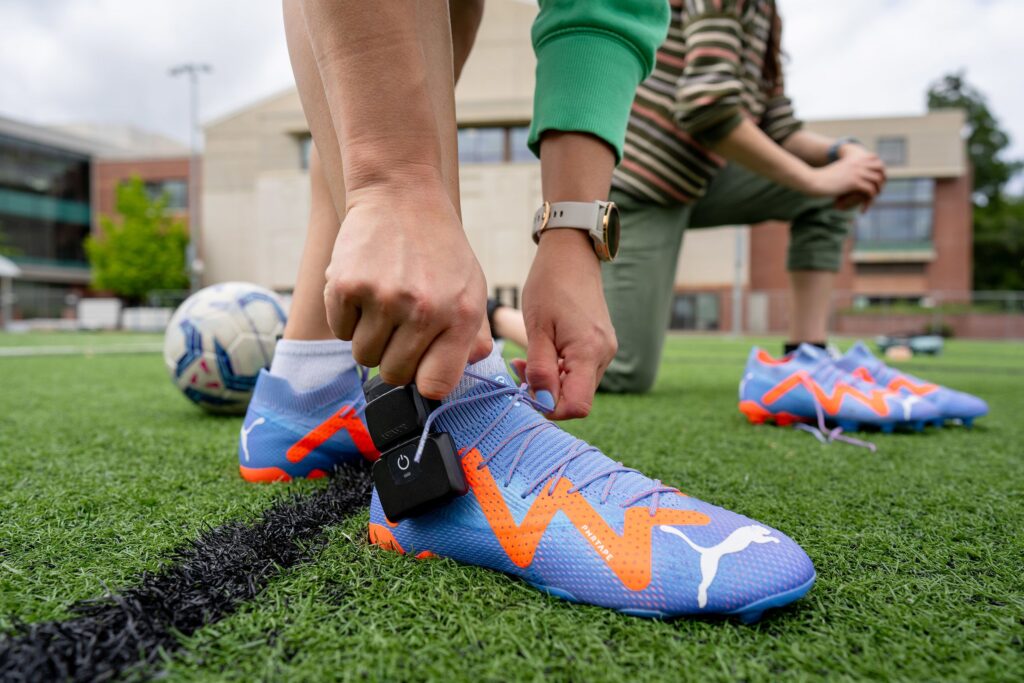
In a groundbreaking effort to address the higher injury rates among female athletes, researchers at the University of Oregon have partnered with global sports brand Puma to develop a new soccer shoe prototype aimed at reducing anterior cruciate ligament (ACL) injuries. This collaboration comes in response to the alarming statistic that female soccer players are two to three times more likely to suffer ACL tears compared to their male counterparts.
The initiative, led by Professor Mike Hahn from the University of Oregon’s human physiology department, seeks to counteract the increased risk of injury stemming from the use of sports products traditionally designed for male athletes. The research team has been delving into the biomechanics of female soccer players for the past seven years, culminating in a prototype shoe that promises to mitigate injury risks.
Understanding the Biomechanics
The ACL, a crucial ligament that stabilizes the knee, is particularly vulnerable during soccer due to the sport’s demands for sudden directional changes. According to studies, the biomechanics of women place different strains on muscles, tendons, and ligaments, contributing to their heightened injury risk. The typical cleats, designed with male athletes in mind, often exacerbate this risk by providing excessive traction, which can lead to increased stress on the joints and ligaments.
Hahn’s research, conducted at the Bowerman Sports Science Center, initially relied on anecdotal evidence but has since produced substantial data identifying factors such as stud shape, length, and positioning that could make cleats more suitable for female athletes. The findings caught the attention of Puma at the Footwear Biomechanics Symposium in Osaka, Japan, leading to a partnership aimed at transforming research insights into practical solutions.
From Lab to Field
The collaboration between the Hahn Lab and Puma has resulted in two prototype cleats: a “mild” version with subtle design changes and a “wild” version with more significant modifications. Testing revealed that optimal mechanics were achieved with a design that balanced elements from both prototypes. This led to the creation of a third version, which will undergo field testing this fall.
While initial tests were conducted in controlled laboratory settings using advanced equipment like force plates and motion-capture cameras, the real challenge lies in validating the shoe’s performance on the soccer field. The upcoming tests on the University of Oregon’s turf fields will provide crucial insights into how the shoe performs in real-world conditions.
Looking Forward
The final product is expected to be available on the market soon, marking a significant step forward in sports technology tailored for female athletes. The collaboration has not only advanced shoe design but also strengthened the relationship between academic research and industry innovation.
“The real value of this work has been in the relationships formed between the research and development teams,” Hahn remarked. “Now that we have established that we work well together and can quickly iterate on development and testing, it’s exciting to think about the impact we can have as we continue to partner on future projects.”
Broader Implications
This project is part of a larger initiative by the Wu Tsai Human Performance Alliance, a pioneering scientific collaboration aimed at optimizing human performance and advancing innovations in human health. The University of Oregon is a founding partner in this $220 million global effort, which includes collaborations across various disciplines such as bioengineering, human physiology, and sports product design.
The alliance funds research focused on injury prevention and the development of innovative sports technology, with the ultimate goal of enhancing recovery processes for athletes. As the sports industry continues to evolve, such collaborations highlight the importance of designing products that cater to the specific needs of all athletes, ensuring safety and performance are prioritized.







